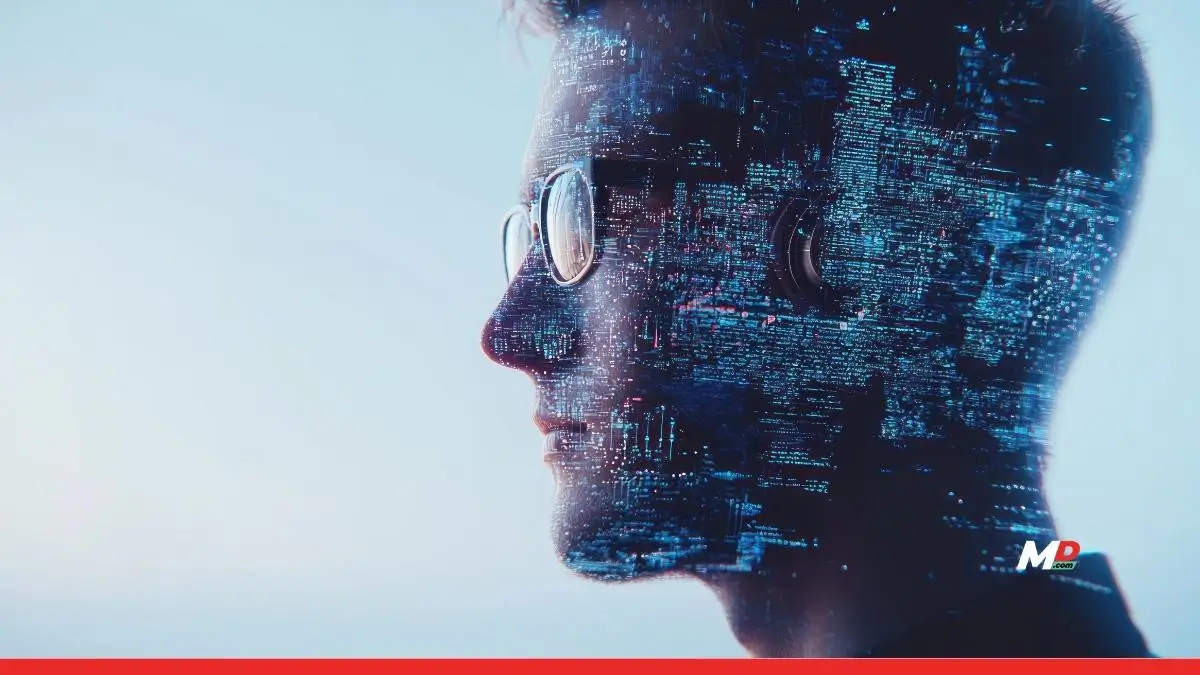Published
7 months agoon

Artificial Intelligence is no longer a distant dream or a futuristic curiosity—it is here, shaping and shaking the advertising industry. For India’s fast-evolving advertising landscape, this evolution is not just a question of capability, but of character: can technology complement creativity without compromising it?
For many, the answer lies somewhere between disruption and discernment.

Reflecting on the role of the men and women behind the advertising machine, Ritu Nakra, General Manager, Delhi at Landor India (pictured to the right), notes how the fabric of advertising has transformed, and how the human element is yet at its heart. “The irreplaceable human element in our process is discernment. It’s the goosebumps test. The moment when a line gives you chills, or a visual just feels right—that’s not coming from a prompt; it’s coming from people who’ve lived, loved, struggled, scrolled, and survived 700 WhatsApp groups.
No matter how advanced AI becomes, it doesn’t have lived experience, empathy, or instinct—and those are critical in shaping narratives that connect authentically. We plan to amplify this by investing in cultural research, cross-functional collaboration, and nurturing talent who can balance logic with gut feel. In a world leaning into automation, human insight becomes the real differentiator.”
Today though, those very fundamentals are being re-examined through the lens of AI.
Across the globe—and increasingly in India—advertising professionals are grappling with AI’s accelerated capabilities. Consider this: a fashion brand that generated a catalogue using 370 AI-generated child models in one weekend; or a production house that dubbed a film in eight languages using AI-cloned voices. AI is now writing scripts, scoring soundtracks, testing strategy frameworks, and even animating feature-length films.
This isn’t sci-fi; it’s a Monday morning.
But amidst the automation, the core of advertising—the ability to connect, persuade, and move—remains deeply human. Nakra puts it best when she points out that less can often mean more, even if humans are simply left pulling the levers as AI does some of the heavy lifting. “That 20% (the human role) is where intuition, context, and judgment comes in. It’s where we challenge assumptions, uncover the unexpected, and refine ideas until they’re not just correct, but compelling.”
The Advertising Standards Council of India’s (ASCI) latest “AdNext: The AI Edition” report offers a macro view of AI’s adoption and potential in the Indian advertising ecosystem. Supported by Google, Nestle, Coca-Cola, and others, the study identifies four transformative pillars: optimism around AI, its varying rates of adoption, consumer trust, and the pressing need for responsible governance.
What’s particularly compelling is India’s position as an early and enthusiastic adopter. Thanks to a tech-savvy population and a flourishing digital economy, India is well-suited to pilot AI-driven campaigns. Digital-native sectors are embedding AI deep into their content pipelines, while legacy industries are cautiously but actively incorporating AI into consumer outreach efforts.
Yet the ethical red flags are waving. With greater access comes greater responsibility. As Manisha Kapoor, CEO and Secretary General of ASCI, rightly warns, “The advent of AI presents an unprecedented opportunity for the advertising industry in India to innovate and connect with consumers in more meaningful ways. However, this power must be wielded responsibly, with a focus on transparency, responsibility, and building lasting trust with consumers.”
While Indian agencies focus on balanced integration, Big Tech platforms are sprinting ahead—sometimes too far. Meta CEO Mark Zuckerberg recently claimed their AI tools would enable businesses to generate and deploy ads “without any creative, without any targeting,” offering as many as 4,000 versions of a campaign automatically. It is innovation bordering on obsolescence—for agencies, at least.
Although Zuckerberg later clarified that such tools are designed primarily for small businesses, the implication was clear: if AI can take over the functions of creative ideation, targeting, and analytics, where do agencies fit?
Agencies like WPP are responding by investing heavily in AI—up to £300 million annually. Their goal isn’t just survival, but reinvention. As Stephan Pretorius of WPP noted, “AI replaces tasks, it eliminates tasks, it doesn’t eliminate jobs… Our commercial models have to change, our team structures have to change.”
But the road to reinvention won’t be easy. For large holding companies and boutique agencies alike, the client relationship is evolving—and often shrinking. Brands expect leaner teams and faster, cheaper output. Fee negotiations are more aggressive. And the pressure is mounting.
Unlike the UK or U.S., India’s agency ecosystem is built around lean, adaptive models. From Tier-1 cities to small-town creative hubs, agencies here are learning to straddle both worlds: retaining the rigour of human-centred strategy while leveraging AI to scale faster and test smarter.
Nakra offers a clear-eyed view of the future: “You can brief AI to remix the past. But you need humans to imagine a future no one’s seen yet. And that’s what brands pay for: not just efficiency, but vision.”
This future is not about replacing humans with AI—it’s about enhancing human potential with it. AI can deliver “good”; it’s still up to us to deliver “great.” That gap—between idea and impact, between good enough and unforgettable—is where human creativity lives.
It is this very edge—the intuition, the nuance, the courage to challenge a brief—that makes all the difference. And it is here that Indian advertising, grounded in emotion, culture, and human truth, has a unique advantage.
AI is not the end of creativity. It is the redefinition of how creativity can be scaled, tested, and realised. In India, where storytelling is steeped in cultural depth and emotional granularity, AI can sharpen ideas but not spark them. That job still belongs to human insight.
The road ahead will demand new frameworks, new ethics, and new collaborations. But the mission remains unchanged: to craft messages that move people, shift behaviours, and build trust.
In a world leaning into automation, human insight becomes the real differentiator. And in that differentiator lies the enduring soul of advertising.


New Renault Duster tested for more than 1 million kilometres across 3 continents.


Why AI-Driven Video Solutions Are the Next Competitive Edge for Enterprises


How India Ubered in 2025 – Everyday travel, extraordinary scale


Dr. Lal PathLabs launches SOVAAKA — a next-generation wellness centre blending science, technology, and personalized care


Meet the former tempo driver set to rule the skies with Shankh Air


The silent, stony guardians of Idar

